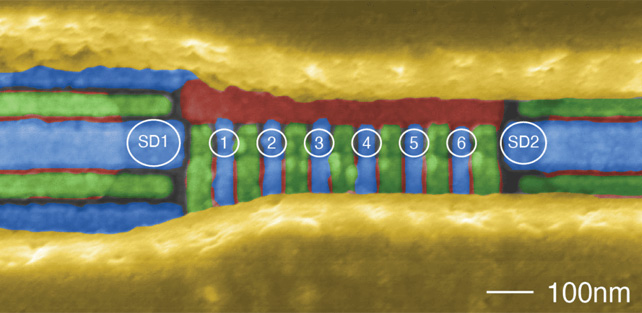Artificial Intelligence
There’s a New Quantum Computing Record: Control of a 6-Qubit Processor in Silicon

Another record has been broken on the way to fully operational and capable quantum computers: the complete control of a 6-qubit quantum processor in silicon.
Researchers are calling it “a major stepping stone” for the technology.
Qubits (or quantum bits) are the quantum equivalents of classical computing bits, only they can potentially process much more information. Thanks to quantum physics, they can be in two states at once, rather than just a single 1 or 0.
The difficulty is in getting a lot of qubits to behave as we need them to, which is why this jump to six is important. Being able to operate them in silicon – the same material used in today’s electronic devices – makes the technology potentially more viable.
“The quantum computing challenge today consists of two parts,” says quantum computing researcher Stephan Philips from the Delft University of Technology in the Netherlands. “Developing qubits that are of good enough quality, and developing an architecture that allows one to build large systems of qubits.”
“Our work fits into both categories. And since the overall goal of building a quantum computer is an enormous effort, I think it is fair to say we have made a contribution in the right direction.”
The qubits are made from individual electrons fixed in a row, 90 nanometers apart (a human hair is around 75,000 nanometers in diameter). This line of ‘quantum dots’ is placed in silicon, using a structure similar to the transistors used in standard processors.

By making careful improvements to the way the electrons were prepared, managed, and monitored, the team was able to successfully control their spin – the quantum mechanical property that enables the qubit state.
The researchers were also able to create logic gates and entangle systems of two or three electrons, on demand, with low error rates.
Researchers used microwave radiation, magnetic fields, and electric potentials to control and read electron spin, operating them as qubits, and getting them to interact with each other as required.
“In this research, we push the envelope of the number of qubits in silicon, and achieve high initialization fidelities, high readout fidelities, high single-qubit gate fidelities, and high two-qubit state fidelities,” says electrical engineer Lieven Vandersypen, also from the Delft University of Technology.
“What really stands out though is that we demonstrate all these characteristics together in one single experiment on a record number of qubits.”
Up until this point, only 3-qubit processors have been successfully built in silicon and controlled up to the necessary level of quality – so we’re talking about a major step forward in terms of what’s possible in this type of qubit.
There are different ways of building qubits – including on superconductors, where many more qubits have been operated together – and scientists are still figuring out the method that might be the best way forward.
The advantage of silicon is that the manufacturing and supply chains are all already in place, meaning the transition from a scientific laboratory to an actual machine should be more straightforward. Work continues to keep pushing the qubit record even higher.
“With careful engineering, it is possible to increase the silicon spin qubit count while keeping the same precision as for single qubits,” says electrical engineer Mateusz Madzik from the Delft University of Technology.
“The key building block developed in this research could be used to add even more qubits in the next iterations of study.”
The research has been published in Nature.







